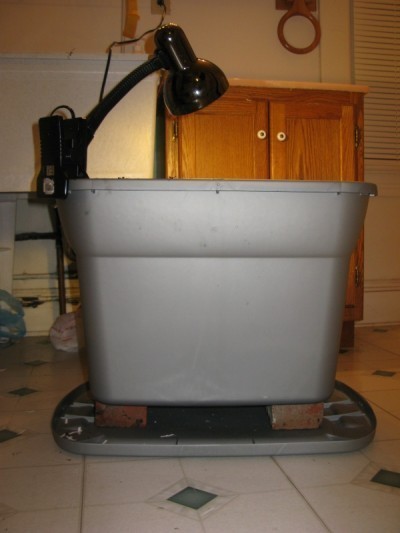






Almost every gardener is familiar with basic composting, where you pile various types of refuse in a heap and microbes break it down into a useable soil amendment. Compost is a wonderful garden additive, but it can take months for the ingredients to break down into useable form. One way to speed up the decomposition and get to your compost fast is by adding worms to the mix.
Plain red wiggler worms eat through piles of compost in record time, making worm composting a smart addition to your gardening activities. If you live in a northern climate, though, winter worm composting will take a little more effort. Taking care of worms in winter is a matter of making sure they have enough heat to get through the season without freezing.
Worms thrive when the outside temperature is between about 55 and 80 degrees F. (12 to 26 C.). When the air begins to turn colder, the worms get sluggish, refuse to eat, and sometimes even try to escape their environment to search for a warmer climate. Cold climate vermiculture, or worm farming in cold weather, consists of fooling the worms into thinking it’s still fall and not yet winter.
The easiest way to do this is to remove the worms and store them somewhere fairly warm, such as an insulated garage or cool basement, or even bringing them indoors. Barring that possibility, you’ll have to create an insulated environment to keep your worms alive through the winter.
The first step in vermicomposting when it’s cold is to stop feeding the worms. When the temperature lowers, they stop eating and any food leftovers may rot, encouraging organisms that can cause disease. The idea is simply to allow them to live through the winter, not have them create more compost.
Insulate the compost heap with 2 to 3 feet of leaves or hay, then cover the pile with a waterproof tarp. This will keep in the warmer air and keep out snow, ice, and rain. Try burying leftover cooked rice in the compost before covering it. The rice will break down, creating heat during the chemical process. As soon as the weather warms to above 55 degrees F. (12 C.), uncover the pile and feed the worms to help them recover.
Interested on Cooking? Learn the Best about Cooking Accessories
Learn the Essentials about the Suppliers of Soil in Surrey
Helping Winter Wildlife during the Cold Spells
What Is A Swale: Learn About Swales In The Garden
Fiddleleaf Philodendron Care – Learn About Growing Fiddleleaf Philodendrons
Can You Compost Sweetgum Balls: Learn About Sweetgum Balls In Compost
Copyright © www.100flowers.win Botanic Garden All Rights Reserved